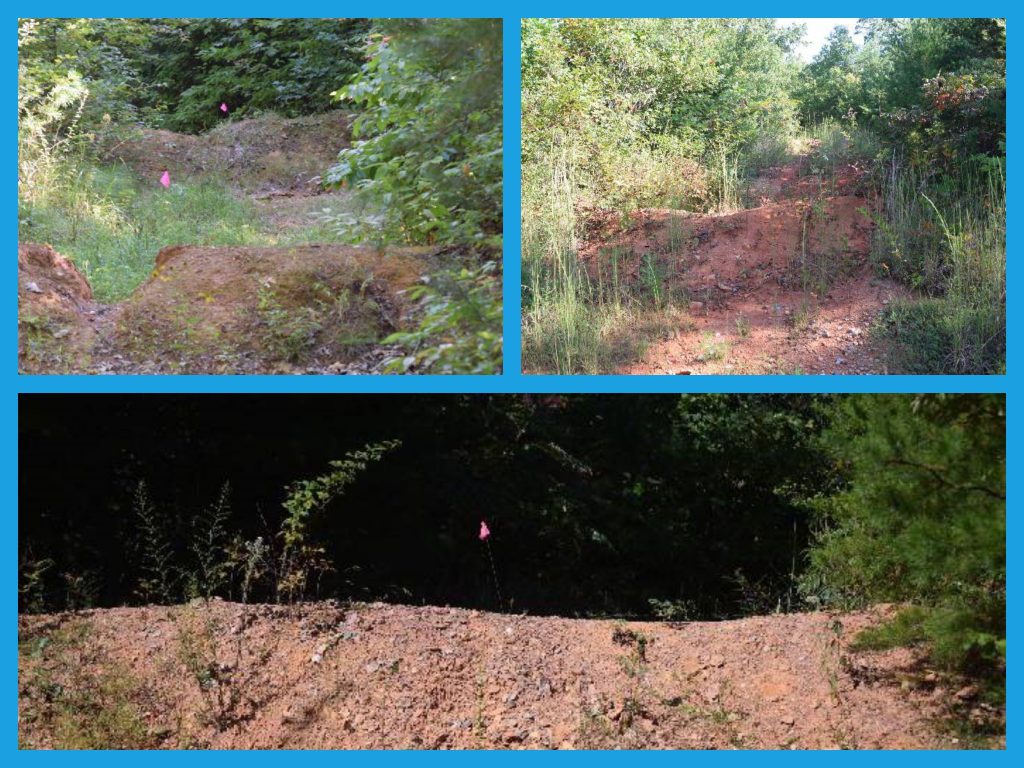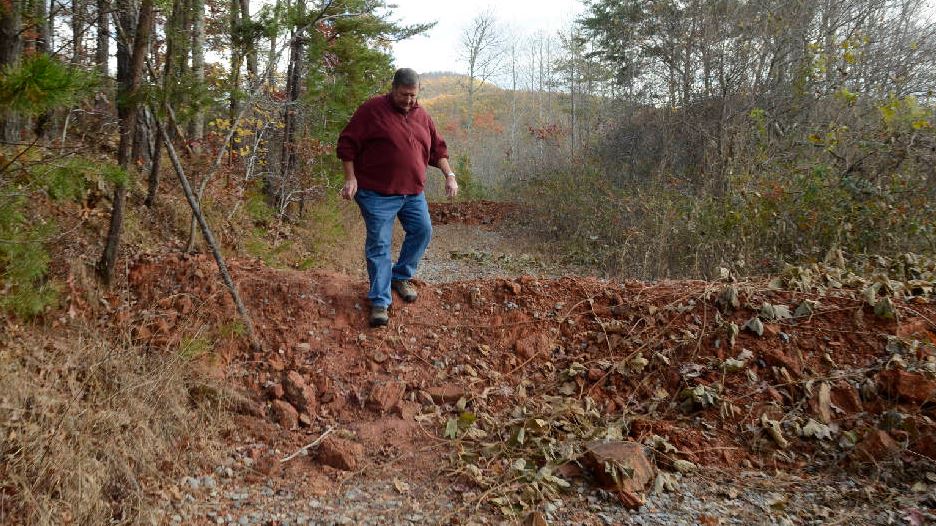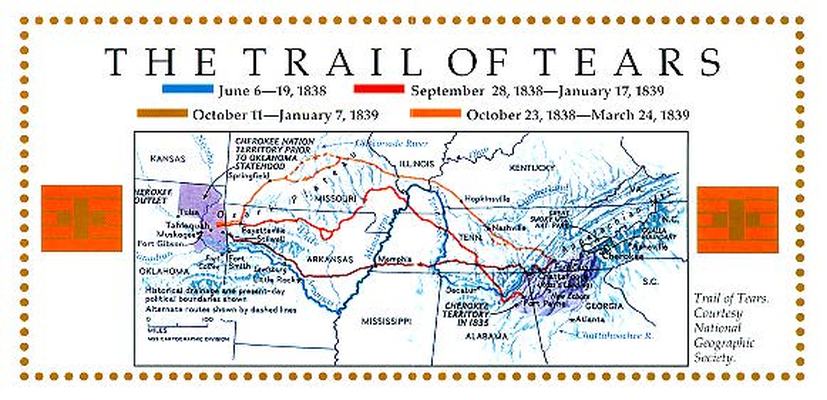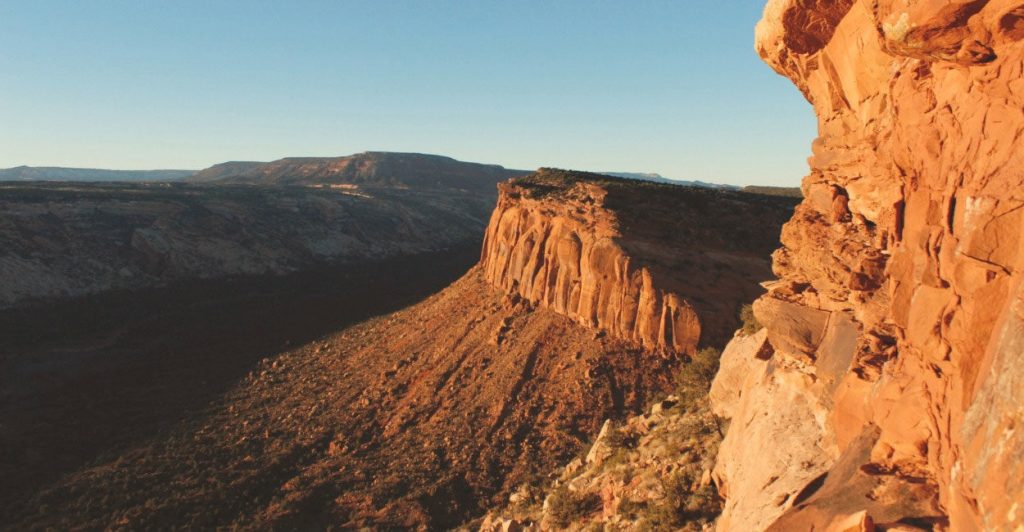Fallout from Forest Service damage to Trail of Tears escalates
The fallout continues after the construction more than two years ago of 35 earthen berms along almost a mile of the Trail of Tears in the Cherokee National Forest.
A whistle-blower group has now called for an independent investigation, and the Tennessee Historical Commission has withdrawn from a 2005 cultural resource protection agreement with the U.S. Forest Service.
On Sept. 19, the nonprofit group Public Employees for Environmental Responsibility, known as PEER, filed a complaint with U.S. Secretary of Agriculture Tom Vilsack. Meanwhile, U.S. Department of Agriculture Inspector General Phyllis Fong is seeking an independent investigation of damage done in the March 2014 Forest Service’s erroneous construction of four “tank traps” and 32 “water bars” across almost a mile of the Trail of Tears in Monroe County.
The construction was an attempt to address erosion issues, as well as an effort to dissuade people from using the trail for offroading.
“This is the most blatant official desecration of a sacred site in modern American history,” PEER executive director Jeff Ruch said this week in a statement on the complaint and historical commission’s move.
On Sept. 6, the Tennessee Historical Commission issued a letter notifying Cherokee National Forest officials that the state agency is voiding a 2005 agreement with the federal office on management of cultural resources in the federally managed forest.
E. Patrick McIntyre Jr., executive director and historic preservation officer for the commission, wrote in the letter that the state agency will review any further work proposals before they’re implemented.
“In light of the recent discovery of the Forest Service’s failure to comply with the stipulations in the Programmatic Agreement and resultant mismanagement of a previously identified historic property — the Unicoi Turnpike/Trail of Tears — located in the Tellico Plains District, this office finds it necessary and appropriate to remove itself from the Agreement,” McIntyre wrote. “By doing so, this office considers the stipulations agreed to in the document as void.”
In the end, the damage done to the trail was the result of a $28,000 contract, a few days’ worth of bulldozing and one hand not watching what the other was doing.
Ruch on Thursday called the Forest Service’s damage an example of “jaw-dropping” incompetence. PEER began its own probe on behalf of concerned public employees, he said.
U.S. Forest Service officials admit to the damage and have apologized to tribal leaders, calling the damage a “terrible error” and recognizing “that we have caused emotional strife for many tribal members,” according to a response sent to the Times Free Press on Sept. 14 from the Forest Service office in Atlanta.
The Forest Service has not responded to follow-up questions emailed to the Atlanta and Cleveland, Tenn., offices on Sept. 15 and 21.
In 2014, the 461-acre tract containing the section of the Trail of Tears was preserved in a joint effort by the Forest Service and the nonprofit organization The Conservation Fund. The protected trail also was intended to create connecting footpaths between nearby historic sites.
Land acquisition for the protected parcel began more than a decade ago with the first tract that had identifiable segments of the Unicoi Turnpike/Trail of Tears roadbed. In 2009, the segment of the Unicoi Turnpike between Hayesville, N.C., and Athens, Tenn., was made part of the official Trail of Tears.
A Forest Service timeline developed from its internal review obtained by PEER indicates that conversations about work to stop erosion and block access to off-roaders began in January 2013.
Points of erosion were found on logging roads and “skid trails” from timber cutting in years past, but the timeline doesn’t mention erosion on the Trail of Tears/Unicoi Turnpike roadbed.
From the timeline, it appears that a meeting on July 25, 2013, among forest service officials left some planners confused. The parcel had not been purchased for preservation yet.
“The district ranger and forest hydrologist left the meeting thinking that there were no cultural resource concerns, and that they had concurrence to move forward with the erosion stabilization work,” the timeline states. “Both the forest archaeologist and the assistant forest archaeologist left the meeting unaware of any project work or project proposal being conceived and agreed upon within the Trail of Tears.”
This point of miscommunication persisted into early 2014 as moves to acquire the land for preservation continued. The berm work was said by a forest hydrologist to be approved by the district ranger on Jan. 30, 2014, and the berm and “tank trap” work was performed from March 3-7, 2014, with several large “tank traps” being built a few weeks later at the TVA-gated entrance off of Joe Brown Highway. The traps serve to make it difficult or impossible for vehicles to use the path.
The parcel of land containing the Trail of Tears was transferred to the Forest Service on Sept. 25, 2014.
But before trail damage from the work was discovered, the district ranger was promoted out of that office in December 2014 into a forest supervisor position, then retired in February 2015.
The trail damage was not discovered until a group participating in a stakeholders meeting on the Trail of Tears visited the site on July 14, 2015.
“Most of the group is astounded and perplexed by the work that was done,” the timeline states. “Two U.S. attorney’s office staff members are informally notified about the damage and tribal representatives are notified.”
Nothing has been done yet to repair the damage that’s now more than two years old, Ruch said last week.
U.S. Forest Service timeline of events to date from its internal review obtained by Public Employees for Environmental Responsibility

DAMAGE TIMELINE
The abbreviated timeline below is part of a larger document that was released last week by the group Public Employees for Environmental Responsibility. PEER obtained the U.S. Forest Service timeline — produced during an internal review — and distributed it with its statement calling for an independent investigation of the damage done to the Trail of Tears segment in Coker Creek, Tenn.
2008: Parcel containing the Trail of Tears/Unicoi Turnpike segment is identified for acquisition
2011: The Conservation Fund agrees to purchase 461 acres of the 571 acre tract and hold for the U.S. Forest Service
2012: The Conservation Fund purchases the tract from River Valley AgCredit
Jan. 15, 2013: Special Warranty Deed for the tract conveyed from River Valley AgCredit is recorded in the Monroe County Registrar’s Office
Jan. 25, 2013: The District Ranger contacted the forest hydrologist and the forest engineer to use soil and water funds in combination with an equipment rental contract to stabilize erosion on the existing logging roads and skid trails which had no erosion control measures and gullies on the road were more than 18 inches deep in some places. The ranger informed the hydrologist that National Environmental Policy Act permitting was not necessary because the Forest Service did not own the property
April 2, 2013: Several folks, including the forest hydrologist and forest engineer lay out some potential locations for water bars and tank traps to protect from erosion and All‐Terrain Vehicle and Off Highway Vehicle use
July 9, 2013: Purchase and task order for $28,500 is signed at the supervisor’s office for work on Peels Branch and Little Citico Creek
July 22, 2013: Forest hydrologist’s email to the district ranger demonstrates knowledge that the location of the Trail of Tears on the site corresponds to vital road segments
July 25, 2013: District ranger, forest hydrologist, forest archaeologist, assistant forest archaeologist and an engineering tech met at the site. The district ranger and forest hydrologist assumed the meeting was to determine if there were any cultural resource concerns that warranted modifications to their proposed erosion and stabilization work. The district ranger and forest hydrologist left the meeting thinking there were no cultural resource concerns, and that they had concurrence to move forward with the work. Both the forest archaeologist and the assistant forest archaeologist left the meeting unaware of any project work being agreed upon
August 8, 2013: Forest Service signs purchase option and contract with The Conservation Fund to acquire two parcels containing nearly one mile of the Trail of Tears
Jan. 30, 2014: Forest hydrologist says she emails forest engineer and district wildlife technician indicating that the district ranger had given approval to start the work. Note: There is no evidence The Conservation Fund received written notice from the Forest Service regarding work on the property
March 3, 2014: A gate is installed on the road access to keep people from driving along the trail
March 3-7, 2014: Work to construct 32 large water bars along the Trail of Tears/Unicoi Turnpike is conducted. Erosion control work is also done on logging and spur roads in the parcel
May 28, 2014: Gate damage is noticed
June 6, 2014: Forestry Service contractor repairs damaged gate and builds three tank traps
Sept. 25, 2014: Parcel is transferred to the Forest Service
July 14, 2015: A group participating in the charrette regarding the Trail of Tears, Unicoi Turnpike, and Fort Armistead visits the site and sees the damage done to the Trail of Tears and Unicoi Turnpike. This group includes National Park Service National Historic Trail staff, the forest archaeologist, the hydrologist, and others. Most of the group is astounded and perplexed by the work that was done
Source: U.S. Forest Service/Public Employees for Environmental Responsibility
Ben Benton

*Free Range Report*



